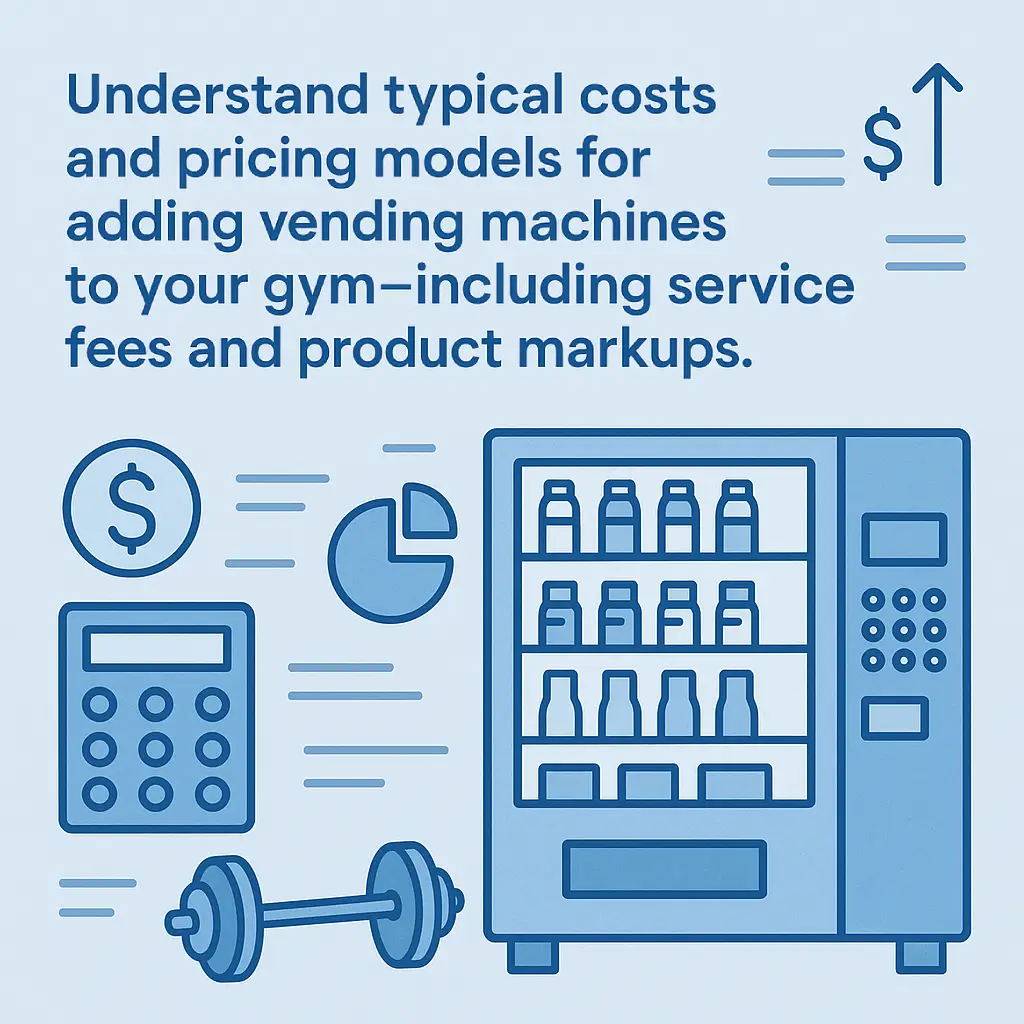Cost of Vending Services for Gyms
Understand typical costs and pricing models for adding vending machines to your gym—including service fees and product markups.
Back to Vending for Gyms ResourcesUnderstand typical costs and pricing models for adding vending machines to your gym—including service fees and product markups.
Back to Vending for Gyms ResourcesMost gyms pay little to no upfront costs. Ongoing expenses usually involve revenue-sharing, commissions, or product pricing adjustments depending on machine type and usage.
![]() Most gyms qualify for free equipment, delivery, and installation
Most gyms qualify for free equipment, delivery, and installation
![]() Revenue share or commission models reduce financial risk for gyms
Revenue share or commission models reduce financial risk for gyms
![]() Product markups influence both member satisfaction and profitability
Product markups influence both member satisfaction and profitability

When exploring the cost of vending services for gyms, it’s important to recognize that most facilities pay little to no upfront costs. Instead, financial arrangements typically revolve around commissions, revenue-sharing, or product pricing structures that align with usage and member demand.
Qualifying gyms usually receive free delivery, equipment, and installation. This eliminates the need for capital investment, making vending accessible for small studios as well as large fitness centers. The absence of initial fees allows owners to add convenience for members without stretching their budgets.
Instead of paying for the machines directly, many gyms work under revenue-sharing agreements. This means a portion of vending sales returns to the gym as commission, reducing financial risk. Commission percentages vary, but this structure ensures gyms benefit from increased member usage without direct expenses.
Another key element in overall cost is product pricing. Gyms should balance competitive prices with sustainable profit margins. For example, healthy snacks and energy drinks often carry higher wholesale costs, but members value convenience and wellness-aligned selections. Setting fair markups keeps members satisfied while still covering operational needs.
The type of machine can influence cost dynamics. Combo machines, glass-front options, and modern micro markets each have different stocking requirements and revenue potential. Newer technology, such as AI coolers or contactless payment systems, may come with higher upfront considerations but often deliver stronger engagement and sales. To better understand machine types, explore resources like stocking guidance for gyms.
While upfront costs are minimal, gyms should be aware of potential hidden fees. Maintenance, repairs, and service expectations should be clarified early. Reliable partners ensure machines remain stocked and functional. Learning how vending impacts long-term member experience can be helpful; see our article on improving member satisfaction.
Ultimately, the cost of vending should be viewed in terms of long-term member benefits and supplemental revenue opportunities. Transparent agreements, well-priced products, and modern payment options create value on both sides. For more perspective on setup expectations, read our step-by-step guide on getting vending machines in gyms.
If you're exploring vending options for your business, Vending Exchange can help simplify the process. Delivery, Installation and Equipment is provided at no cost to you - vendors provide the machines, keep them stocked, and handle all servicing. Whether you need a provider or full-service management, just fill out the form on this page to get started.
Most gyms do not pay upfront. Equipment, delivery, and installation are typically free for qualifying locations.
Ongoing costs usually involve revenue-sharing or commission models rather than direct payments.
Potential hidden costs may include maintenance or service charges, so these should be clarified before installation.
High markups can frustrate members. Balanced pricing ensures both satisfaction and profitability.
Combo machines are versatile, while micro markets and AI coolers can drive higher revenue with broader product options.
Yes. Commission or revenue-sharing models allow gyms to earn a portion of sales generated.
Features like contactless payment or AI tracking may cost more initially but improve usage and reduce losses.
Restocking is usually included in service agreements, minimizing direct expense for the gym.
Yes. Compact machines and low-cost models are available for studios with limited space.
Consider member satisfaction, sales reports, and commission structures to determine financial and practical value.